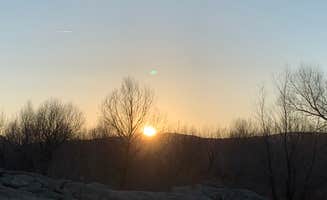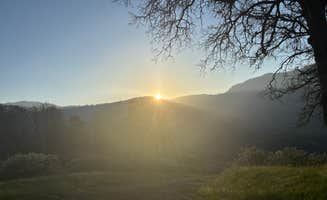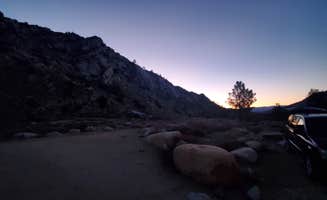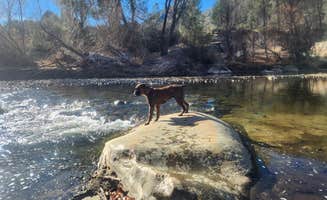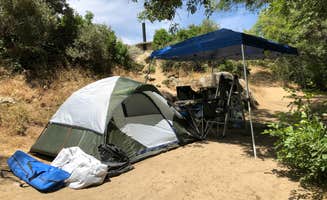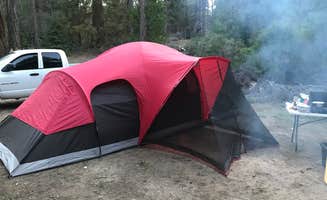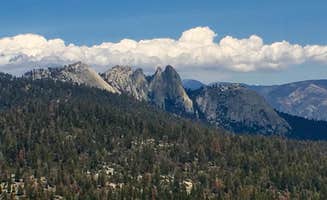Dispersed camping opportunities near Wofford Heights, California span multiple Forest Service roads and recreation areas beyond Lake Isabella. Overnight sites typically sit between 3,000-7,500 feet elevation, with higher campsites experiencing temperature swings up to 40°F between day and night. Free camping areas remain accessible year-round, though winter access requires chains or 4WD vehicles on unpaved roads from December through March.
What to do
Wildlife viewing with safety: At Sequoia National Park Dispersed campground, visitors regularly encounter wildlife in the meadow area. "It's a really nice spot. The meadow is nice but you need to hike in. We saw two bears every night so take precaution. They were Cubs, they're not scared of you but also won't mess with you if you lock up all your food," notes Steven R.
Stream exploration in spring: Brush Creek Recreation Site offers stream access for cooling off during hot months. "This is our favorite campground in the Sequoia National Forest, of the four we've stayed in. As long as you are 25 feet away from the river you can camp anywhere you want, so definitely not restricted to the parking lot area," reports Les R.
Stargazing all night: Away from city lights, the area provides exceptional night sky viewing. "No light pollution, and is beautiful enough to knock you off your feet because of all the stars. Good location. I would definitely do this again," notes Jeffrey T. at Stine Cove Recreation Site.
What campers like
Multi-day isolation: Hanning Flat Dispersed Area provides true solitude for extended stays. "On my way into Sequoia NF I was so excited to see Hanning Flats dispersed camping area. My pup and I stayed for three nights and didn't see another person or vehicle the whole time," reports Kiley S.
Morning wildlife encounters: Pastoral experiences are common at higher elevation sites. "Say hello to the cows for me! They gave me a warming welcome which set the tone for this ideal overnight spot," shares Izzy Y. about Stine Cove Recreation Site.
Hidden spots with quick town access: Keyesville Recreation Area Dispersed combines seclusion with practicality. "We pulled in at night time around 10:30PM. I was scared it would be sketchy, but turned out to be a smooth dirt road. We encountered multiple other campers as well before we found a suitable turnout," writes Daniel H.
What you should know
Vehicle requirements vary by site: Sand and rough terrain limit access at some locations. "Would suggest 4x4 and wouldn't recommend heavier vehicles as it's a sandy dried up lake bed and we had to dig ourselves out in the morning," warns Zoe J. at Hanning Flat.
Toilet availability inconsistent: Chico Flat Dispersed Camping has seasonal bathroom access. "Bathrooms were locked. It's only a 3 minute walk down to the river. Very nice, convenient and clean," notes Cameron S. who visited in January.
Weather preparation essential: Wind can be severe in exposed areas. "Winter winds here almost blew the tent over with my pup and myself inside. Although occasional gusts may seem obvious for location and time of year I would have lost that tent had I not been inside," cautions Izzy Y.
Tips for camping with families
Look for off-season weekday camping: Avoiding peak periods improves the experience. "We showed up on Thursday and it was nice and mellow. But then the weekend crowd showed up Friday. It got very crowded and finding a spot can get desperate," advises Adam C. about Brush Creek.
Select sites with natural boundaries: Evans Road Hidden Camp provides natural containment. "Clearly defined track pops off 155. There are spots for a couple of campers. We drove to the end of the track, ends in a loop, and parked our camper van there," shares Erik R.
Check site distances from water: Water access varies dramatically. "It's a rec area, so with that in mind the weekends are getting busy. a lot of motocross, ohv and atv traffic from late thurs to sunday. other than that it is a wonderful free camping," notes Louis G. about Keyesville.
Tips from RVers
Scout sites before committing: Sequoia National Park Dispersed campground requires advance planning. "Arrived at the coordinates and had no place to turn off the road. Also, the area was hit by wildfires (maybe 2 years ago) so it's all pretty barren," warns Ryan B.
Look for established pull-offs: Finding flat parking areas is essential. "There are about 3 dirt road pull offs in this area. The 2 on the south side are attainable with careful driving and 2 wheel drive," explains Gerald E. about Evans Road Dispersed Camping.
Check entry road conditions: West Keyville presents challenges for larger vehicles. "There is quite a steep and narrow entry road into the site. I drove in with a 30 feet class A camper and I am little worried if I will get out tomorrow. Also I smacked some leaves off of a tree on my way in with my 13" clearance," cautions Marcus K.



